|
Great excitement – you have just been awarded a new construction project. Then elation fades as reality sinks in. You have to construct that project, do that work, for that price, under those project conditions, in that time frame and for that client. Who was the idiot who priced the job? Maybe it takes a while for the reality to hit home. Sometimes several months into the project before the bad news starts filtering back to management at Head Office. Even then they probably don’t want to hear the truth, rather hoping things will get better, or blaming the incompetent project team. Over the last few weeks we considered reasons why construction projects aren’t successful. We looked at the role of the client (How can clients ensure their projects meet their expectations?), the impact of the design team (How designers can make construction projects more successful), the client’s project manager (How can the owner’s Project Manager ensure the success of their construction project ), the tender or pricing (bid) documentation (Why construction projects go wrong before they even start – what should owners do?) and the selection and adjudication of the contractors' prices (Why owners sometimes employ the wrong contractor). But all of this can be in place and yet, the construction project is doomed to failure before it starts. Yes, the contractor has messed up (there are a few other choice phrases you could use here) their price. Why? What could have been done differently? Where did it go wrong? You received the project pricing documents what happens now?You receive your tender (bid) documents – what now? Believe it or not the pricing process sometimes fails before it even begins. 1. Check the project pricing documents are complete. Are all the pages and drawings included? Missing information could mean you don’t allow for, or price, certain items. 2. Read the document. Fairly basic, but this often doesn’t happen! Are all the contract conditions acceptable? Some owners apportion unreasonable risks or impose unacceptable contract conditions on their contractors. 3. Understand the basis of the contract – lump sum, design and construct, remeasurable? 4. Understand the contract document. Is the scope of work clear? Are the requirements and specifications ones you would normally expect? Are there contradictory clauses? Is the information complete? Don’t start construction projects without a proper contract 5. Understand the client. Is it someone that you want to work for? Will they be able to pay you? In construction it’s important to know your clients. It could save you 6. Can you provide the deliverables requested by the client, such as; insurances, sureties (bonds), etc.? Does your company have the required registrations to build the project? 7. Do you have an experienced person to price the construction project, who understands how similar projects are constructed in that location? 8. Of course make sure you note when and where the price must be submitted and what needs to be included. How many contractors put in effort in pricing a project, only for it not to be considered because it didn’t meet the requirements? #constructionpricing #constructionprojects #constructionmanagementtips Pricing the construction project There are obviously many different ways and systems for pricing construction projects but I’m not going to dwell on them here, except to say make sure you are using methods appropriate to the project, ones your estimator is familiar with and that will provide a reliable price. 1. You may have to first prepare designs, or measure the project. Sometimes the client has provided a bill of quantities for you to price – this should be checked to ensure its accuracy. 2. Work out the resources required for the project. Do you have the required skills and resources? If not will you be able to acquire them? 3. Prepare a tender schedule (program). Are you able to complete the project in the client’s specified time? The construction project tender or bid schedule 4. Calculate the costs to carry out the project (including material costs, equipment, labour and subcontractor costs). Ensure these costs allow for everything, including; transport, handling, fixings, access, wastage, taxes, etc. 5. Can you comply with the safety and quality requirements? 6. Do all the materials you propose using meet the specifications? 7. Ensure suppliers and subcontractors are provided the relevant documentation and specifications to price. Carefully adjudicate supplier and subcontractor quotations to ensure there are no missed costs and that they can deliver in accordance with your tender schedule. What to include in Subcontractor pricing documentation 8. Visit the project location to ensure you understand the local conditions and anything which could impact the construction costs or time. Don’t Submit Your Construction Price (estimate/tender) Proposal Until You Get These Questions Answered On A Site Visit 9. Calculate the cash flow for the project. Can your company withstand any negative cash flow requirements? Improve cash flow. Implement these strategies when pricing your next project Finalising your price for the project 1. Ensure you understand the project risks. Have you mitigated them, allowed extra costs in case they do happen, or can the project and company survive the risk event should it occur? 2. Have you allowed for the expected weather events? 3. Check all arithmetic calculations. You wouldn’t be the first contractor to make an arithmetic mistake or put a decimal point in the wrong place. 4. Ensure you have priced all of the items. 5. Understand your opposition and how they will price the construction project. 6. Understand currency risks and price escalation over the project duration. Should you allow extra for this? 7. How does your calculated price compare to other similar projects you have constructed? 8. How desperate do you need the construction project? Knowing everything you now know about the construction project do you still want to win it? It’s not too late to withdraw from the project and not submit a price. Don’t let egos get in the way of this decision. Should contractors price every project? Get your price right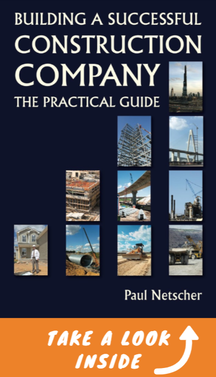 What I’ve outlined is an oversimplified skeleton. Arriving at the correct contract price takes more than this (for more read; ‘Building a Successful Construction Company: The Practical Guide). However even these simple basic steps are overlooked, and construction companies end up winning a project at the wrong price, or one they don’t have the skills and resources to build, or one for the wrong client, or with cash flows they can’t meet. But what happens after you submit your price can still mean the difference between winning and losing the project. It could still result in you being awarded a project with the wrong price or one with unacceptable contract conditions – Also read; Steps to help you win your next construction project and Construction project bid negotiations – Don’t make a mistake So next time your company wins a project I hope it was priced correctly! "What I personally liked about this book were the case studies; they were great. Also, the proper explanation of every thing talked about." Reader review on Amazon (Written by Paul Netscher the author of the acclaimed books ‘Successful Construction Project Management: The Practical Guide’ and ‘Building a Successful Construction Company: The Practical Guide’. Both books are available in paperback and e-book from Amazon and other retail outlets. To read more on this important topic get your copy of these books today. Read what other have said after reading these books.)
© 2022 This article is not to be reproduced for commercial purposes without written permission from the author.
10 Comments
Take pride in the quality of your workAn important lesson for me about quality came from a Foreman who was probably one of the best I have worked with. Our client tasked us with placing concrete inside a concrete silo built by another contractor. The concrete had to slope steeply to an opening in the centre of the floor and the silo would be used to store rock from a platinum mine. I’d said to the Foreman that this was a rushed job and the client was only concerned with the structural integrity, not the aesthetics of the work, so he shouldn’t waste time with finishing the concrete too neatly. The Foreman was horrified at this statement, and told me in no uncertain terms that as long as he was building something it would be to the best quality possible, and finished off correctly. He would not take short cuts. Even if nobody would see this concrete it would be to the same quality as any other concrete he placed. There was only one way to do a project, he’d said, and that was to do it right. "We should all be proud of our work." And, of course, he was absolutely right. This is the way we should all view our work and perform our tasks – with pride! I’m frequently amazed at how many workers have no pride in the quality of the work they produce. Many homes, hotels, apartments and shopping complexes I’ve visited show signs of poor quality. I regularly see examples of poor tiling, walls that are built out of square and doors not fitted correctly. #constructionquality #constructionmanagement #constructionprojects Quality is not only about paperworkUnfortunately quality control is often forgotten in the rush to complete the construction project, or sometimes just turns into a paper exercise, and is a task the Project Manager leaves to the Supervisors, or on bigger projects Quality Engineers or Quality Managers. However, it’s the Project Manager’s responsibility to ensure that quality control is treated seriously, is not only about paperwork, and that people are delegated with specific responsibilities to deliver the correct quality, understanding what to look for and what the required quality standards are. This is helped considerably when individual tradespeople have the required skills and take pride in the quality of their work. "All the quality paperwork in the world, with all their signatures, will not turn a poor quality product into a good quality product." All the quality paperwork in the world, with all their signatures, will not turn a poor quality product into a good quality product. However the paperwork trail is important in ensuring that proper quality procedures have been implemented and followed. The cost of poor quality construction workPoor quality results in: 1. Additional costs and delays when work has to be redone. 2. A poor reputation for contractors. 3. Additional costs to clients when defects have to be repaired later, for increased maintenance costs or for disruptions to their operations while defects are repaired. 4. Can cause injury and death if the structure fails. “There is no excuse for poor quality." Quality constructionQuality construction is about: 1. Delivering to the client a construction project that meets and exceeds their standards and specifications. 2. Constructing the construction project in accordance with the construction drawings and design details. 3. The project meeting the local bylaws and codes. 4. Meeting the code and specification requirements of the state or country (except if the client has particular exemptions allowing deviations from these codes and requirements). 5. Meeting the construction company’s standards. 6. Meeting your own standards – The question everyone should ask is, ‘Would I pay for and accept this quality?’ If the answer is no, then the product doesn’t meet the required quality standards, nor is it a product you are proud of. "Would you pay for and accept the work you produce?" What does quality mean for you? Other articles by the author: The importance of planning your project Repairing defective work on construction projects Why construction companies should be concerned about their reputation (Written by Paul Netscher the author of the acclaimed books ‘Successful Construction Project Management: The Practical Guide’ and ‘Building a Successful Construction Company: The Practical Guide’. Both books are available in paperback and e-book from Amazon and other retail outlets. This article is adapted from information included in these books.)
© 2022 This article is not to be reproduced for commercial purposes without written permission from the author.  Image courtesy of Stuart Miles at FreeDigitalPhotos.net Image courtesy of Stuart Miles at FreeDigitalPhotos.net and Why General (Main) Contractors employ the wrong subcontractors. In my article last week; ‘Why construction projects go wrong before they even start – what should owners do?’ I discussed the importance of issuing sound bidding documentation to contractors and allowing them sufficient time to price the project. So now you have issued good documentation to your contractors and received a number of bid prices. What happens now could jeopardise the entire project. Tender or bid adjudication Unfortunately just receiving prices and awarding the project to the lowest bidder isn’t good enough. The purpose of the tender adjudication is to assess the bids or tenders received to ensure they conform, the contractor can do the work and to check for other additional, hidden or extra costs. Bids need to be checked and adjudicated properly to ensure: 1. Is the price reasonable? Owners should query prices that seem extraordinarily lower than others or much cheaper than their estimate. A bargain price may not be a bargain when the contractor runs out of money declaring bankruptcy part way through the construction works. This will result in delays while another contractor is appointed, almost always at a much higher cost, and often means warrantees on completed work are null and void. 2. Has the contractor excluded any work or items, or offered materials with a lower specification? 3. Has the contractor priced all the items? Are there any arithmetic errors? 4. Can the construction company do the work? Do they have the resources and experience? Check that no other major project commitments could distract them or take resources away from your project. 5. Is the contractor’s schedule or program acceptable? Does their schedule meet your milestones? Can you meet the milestones that the contractor has inserted, for example; when they require information or access? 6. Is your cash flow sufficient to meet the contractor’s requirements and schedule? 7. Has the contractor included contractual terms and conditions which may not be acceptable? 8. Is all the bidding documentation complete? 9. Consider also the contractor’s safety record and their reputation for quality. 10. Does the contractor understand the project and have they allowed for any special conditions applicable to the project? 11. Is the contractor financially secure? 12. Is the contractor able to provide the insurances, sureties and guarantees required? 13. Are there any other costs that you may incur by awarding the project to the contractor? This may include additional supervision or providing additional resources. 14. Has the contractor’s price included all taxes and duties? 15. Is the contractor’s proposed construction methodology acceptable? Will it achieve the desired quality? Do you need to revise designs at additional cost? How will it impact your operations, other contractors, neighbours or any permit conditions? 16. Does the contractor have a reputation for claims and legal action? This could add to costs later. Dealing with uncertainties Sometimes it may be necessary to request further information from the preferred contractor. It’s also useful to have a formal meeting with the contractor to ensure they fully understand the project and to allay any of the owner’s concerns. Conclusion It is important to select a contractor who can deliver a quality project, safely, on time and for the best price with no hidden surprises which may add to the project costs later. Selecting a contractor purely because they are cheapest can work out to be more expensive later. If in doubt employ experts to assist with adjudicating and assessing your bids. Other similar articles by the author: How can clients ensure the success of their projects? What does it take to manage a construction project? Make your construction project more successful (Written by Paul Netscher the author of the acclaimed books ‘Successful Construction Project Management: The Practical Guide’ and ‘Building a Successful Construction Company: The Practical Guide’. Both books are available in paperback and e-book from Amazon and other retail outlets. This article includes information from a third book which will be published later this year) © 2015 This article is not to be reproduced for commercial purposes without written permission from the author.  Image courtesy of scottchan at FreeDigitalPhotos.net Image courtesy of scottchan at FreeDigitalPhotos.net Over the last 2 weeks I’ve discussed the importance of retaining and employing skilled good people in construction. Read: ‘How do we retain skilled employees in construction?’ And ‘Retaining skilled people in construction – part 2’ However, often we have to employ new people to replace someone who has left or to fill a position on a new project. Frequently this isn’t done properly and we end up with a person unsuitable for the role, or someone who is unhappy and leaves. In some cases we may even employ someone more senior and expensive than is required. Unfortunately these positions often have to be filled in a hurry and construction companies sometimes have to make-do with literally the first candidate that walks through the door. Often the main criteria for assessing the person are their skills and experience. However, construction companies and projects vary, and a good candidate for one project or company may not necessarily be the best for another. Sometimes the task of finding and employing someone is left entirely to the HR department who are given only the briefest description of what’s required; “I need 5 Supervisors yesterday.” Employing the right person So here are some things that I think should be considered to determine if someone is the ‘right person’ to employ for your construction project and company. 1. They require knowledge and experience to perform the tasks expected of them. (An experienced building Supervisor is possibly not best suited to supervise the construction of a road.) 2. They need to fit in with the culture of the company and must ascribe to the company’s values. (It’s pointless for the company to set high standards for safety and quality, and then employ a Supervisor who is unconcerned with these values. They may have all the experience and knowledge for the position, but they will destroy the company’s reputation in no time.) 3. They should be willing to work in the regions and areas in which the company operates in. (I’ve seen many personnel unhappy because they’ve had to relocate their family, or had to work in areas far from where they live. Yet, there are individuals who enjoy working in these regions and others who are willing to relocate their families to remote areas.) 4. They must have aspirations which the company can satisfy. (Everyone has different aspirations and not all companies can meet these. Failure to fulfil a person’s aspirations eventually results in them becoming unsatisfied and unhappy.) 5. Construction is a people business and everyone should be able to communicate and work with others. 6. An important aspect on a large project, where there may be a number of Supervisors and Engineers, is that each person should be a team player, willing to share plant and equipment, or to help out in other areas. I have sometimes had Supervisors who thought they should have plant and equipment allocated full-time to their sections of work, that they should take priority when materials arrived on site. 7. On occasion Project Managers or Supervisors possibly will, due to the size and complexity of the project, have to report to a more senior Project Manager or Supervisor. This might not suit some who have been used to working alone on smaller projects. 8. Project Managers who have become used to working on larger projects where they are able to delegate many tasks to support staff may be unhappy to work on smaller projects where they have to carry out many of the tasks themselves without the support of a team. 9. Some roles don’t require the best or most experienced Supervisor or Project Manager. In fact, often more experienced people can become bored or unhappy working on what they consider is a more mundane project. These projects could be better suited to more junior individuals, who may cost less, yet will revel in the opportunity to learn and grow on these projects. 10. Hopefully you are employing someone for the longer term – beyond the current project requirements. In this case it may be prudent to consider how they will fit into the company’s future. Will they fill the intended future roles you have in mind, or will they become a liability later? Of course you are probably unlikely to find the perfect candidate so you’ll probably have to compromise somewhere. Skills are probably easier to add to, but personalities can be hard to change. To learn more read; ‘What does it take to manage a construction project?’ Is there someone else? Of course before employing someone to fill a position it may be pertinent to consider the following: 1. Is there someone already in the company who could fill the role? This person could be in another division – I have seen some companies where one division is employing people while another division is letting people go. 2. Is there someone who could fill the roll who will be released shortly from another project? Sometimes it may be necessary to juggle people around to release the person sooner. 3. Is there someone in the company who could be trained to fill the position? 4. If the role is for a short period only it may be better to employ a person on a limited contract only, or outsource the job. Conclusion Construction companies are always under pressure to cut costs and keep staff to the minimum. This is often exacerbated by the cyclical nature of the construction business which can go from ‘boom’ to ‘bust’ almost overnight. Despite this it makes sense for construction companies to have training programs to develop their staff to fill roles in the future. People will leave. Companies will obtain new projects. To always think that you will then, at short notice, be able to find just the ‘right person’ is short-sighted. In fact I have often seen that companies don’t find the ‘right person’. They end up employing the ‘wrong person’, which often leads to costly problems on the project, and even impacts the company’s reputation. What do you consider when you’re searching for someone to fill a roll? What experience have you had when the ‘wrong person’ was employed? Thank you for reading this article. If you found it useful please ‘like’ or share it so others in your network can read it. Please add your comments so we can learn from your experiences. Other similar articles by the author: How poor productivity impacts projects Understanding what impacts your construction company’s reputation. Why should we take construction safety seriously? (Written by Paul Netscher the author of the acclaimed books ‘Successful Construction Project Management: The Practical Guide’ and ‘Building a Successful Construction Company: The Practical Guide’. Both books are available in paperback and e-book from Amazon and other retail outlets. This article is adapted from information included in these books.) © 2015 This article is not to be reproduced for commercial purposes without written permission from the author. Over the last 3 weeks we have discussed the impact of clients (How can clients ensure their projects meet their expectations?), the design team (How designers can make construction projects more successful) and the owner’s project manager (How can the owner’s Project Manager ensure the success of their construction project) on the success of construction projects. "Many construction projects are destined to fail before they even start" Yet, many construction projects are destined to fail before they even start. In this article I discuss the owner’s pricing (tender) or bidding documentation which they issue to construction companies so they can formulate a price to carry out the work. Project pricing or bid documentationThe purpose of this documentation is to provide sufficient information to construction companies so that they can accurately price the construction work. Together with this information the contractors should also be provided with information relating to the contract conditions and project site conditions so they understand how the project will be administered, what is expected of them and what they can expect from the owner and their representatives. #constructionprojects #contractdocumentation What happens if the pricing information is poor?Owners, or their representatives, normally request contractors to price the construction project based on drawings and documentation they issue to them – the tender or bidding documentation. Unfortunately often this documentation is incomplete, incorrect and shoddy or has contradictory information. Sometimes the final facility constructed is radically different to the one proposed in the pricing or tender documentation, which gives rise to project variations (change orders), delays and disputes. "Providing inaccurate or incomplete project information will create problems on the project" Providing incomplete pricing information, inaccurate information, or information of a poor quality, creates a number of problems and risks to both the owner, the project and the contractor: 1. Some potential contractors may be put-off from pricing the construction project, thus reducing the number of bids or quotations, because:
2. Contractors may make certain assumptions. These assumptions could make their price more expensive than it should be – for instance the owner may be providing water and electricity for construction, but if this isn’t stated in the pricing documentation provided then the contractor may include for the provision of these in their price. 3. If contractors have to guess something or assume something in their price they may add in an extra contingency to cover the risk of an incorrect guess. This makes construction prices more expensive. 4. Any changes to the scope, documentation, specifications or further additional information given to the contractor after they have submitted their quotation or price could give them reason to ask for a variation (change order). This can add to both the cost and the time of the construction project. 5. Ambiguities and contradictions in the project pricing documentation may give rise to disputes and variations later. 6. Some contractors may misunderstand the documentation, leading them to incorrectly price items or omit them completely, which leads them to submit an overall price lower than they should. Awarding the project to a contractor whose price is too low could lead to problems later should the contractor become bankrupt or default on the contract. 7. Because of poor documentation, contractors may add numerous clarifications and exclusions to their bid. This can:
What should be included in the owner’s tender or bid request?So what should be included in the project pricing documentation to enable construction companies to formulate their price? 1. A full Scope of Works for the portion of works the contractor must carry out. 2. Milestone dates which indicate access dates, information issue dates and sectional and final completion dates. Preferably a construction schedule should be included. This should also include any interruptions to work and requirements to complete work after the owner and their other contractors have completed work. 3. Project specifications. 4. Sufficient information or detailed drawings to enable the work to be accurately priced. 5. Special project conditions which may include limited working hours, access requirements, working with other contractors, etc. 6. Detail the terms of the contract, which would include, payment conditions, sureties, warrantees, and retention monies. It’s usually best to include the conditions that will be used in the final contract. 7. Contain the relevant site data and conditions, which may include site surveys, ground conditions, etc 8. Project specific safety and environmental requirements. 9. Clearly state what the contractor must provide and what they will be provided, and by when. This may include services (like power and water), cranes, security, insurance and scaffolding. 10. Specific quality requirements and testing. 11. Commissioning requirements and spare parts necessary. 12. Specific requirements the contractor may have to comply with, such as providing particular staff or equipment. 13. By when the price is required, who it must be addressed to, what must be included with the price, the format of the documentation and where it must be delivered to. How long should contractors have to price a project?Unfortunately many clients provide too little time for contractors to accurately price construction projects. The risk of this is that: 1. Contractors decline to price the project because of insufficient time which then limits the competition. 2. Contractors don’t have sufficient time to obtain the best quotations from their suppliers and subcontractors, which means their price is higher than it could be. 3. Contractors have insufficient time to price the work so they add contingencies which inflate their price to cover items they were unable to price accurately. 4. They are unable to fully develop alternative methods or materials which may have lowered their price "Allow sufficient time for contractors to submit an accurate price." The length of time required to price a construction project accurately will depend on: 1. The size and complexity of the construction project. 2. The level of detail supplied by the owner in their bidding documentation. 3. The level of detail the owner expects to receive with the contractor’s price. 4. The amount of design and specialised procurement that the contractors have to undertake to formulate their price. 5. The level of work in the construction industry. If construction companies are all busy with pricing projects it may mean that new bids can’t be started immediately. 6. The location of the project – projects in remote regions or other countries may take longer to price as construction companies may not be familiar with the local resources, conditions and subcontractors in the area. Owners should consider asking their targeted contractors how much time they’ll require to price the project.
Time spent on preparing sound project documentation will pay dividends"Project scope and design details should be firmed up before contractors price the project" 1. Owners should engage professionals to prepare the tender/pricing documentation and project contract. 2. This documentation must be reviewed to ensure it is complete, accurate and unambiguous. 3. They should ensure the construction project scope of works and design details and project information has been firmed up so there won’t be too many changes later. 4. They must allow sufficient time for contractors to formulate an accurate price. Often owners rush the tender or bidding process. Time and money spent delaying this process to ensure construction companies have the best and complete information to price the construction project is often time well spent. This will save additional costs and delays during construction. Proper project pricing documentation is invaluable, and can avoid many of the disputes we see on construction projects today. In the next article Why owners sometimes employ the wrong contractor we discuss the role of the price Tender) or bid adjudication process. "This is a fantastic book to get a realistic and detailed idea of construction management" commented one reader. Other useful articles by the author Choosing a subcontractor Project documentation Project scheduling – the relationship between time and cost (Written by Paul Netscher the author of the acclaimed books ‘Successful Construction Project Management: The Practical Guide’ and ‘Building a Successful Construction Company: The Practical Guide’. Both books are available in paperback and e-book from Amazon, other online stores and retail outlets - Order your copy now. This article includes information from a third book which will be published later this year)
© 2022 This article is not to be reproduced for commercial purposes without written permission from the author. Last week I posted a discussion on the importance of retaining skilled productive employees and some ways to do this. Read: ‘How do we retain skilled employees in construction?’ This week on LinkedIn I connected with a construction supervisor from a previous company and I was prompted to continue this discussion. He hadn’t worked in my team as he was with another division in the company. However, in accepting my invitation he said; “I remember you from the Stadium Construction Project in 2009. I was a trainee Supervisor and you were the first director from the company to welcome me and shake my hand.” I thought; “wow, a simple gesture on my part, yet it made such an impression that it was remembered 6 years later” #constructionmanagement #constructioncareers #constructionprofessionals "Compliment people for a job well done. Good safety, good quality, completing a difficult project." As a divisional manager I made every effort to visit my construction projects as often as possible. This wasn’t only to see how the projects were progressing, but also to meet our staff. In these visits I asked the Project Manager to walk me around the project. Unfortunately my memory for faces and names is not what it should be, but anyway sometimes we can be so engrossed in a problem or deep in conversation that we inadvertently walk past someone without acknowledging them. So, I instructed the person walking me around to introduce me to our Supervisors, Engineers and other staff, even if I knew them from many years, so that I was sure to acknowledge them. (Apologies to the many that I probably missed or failed to acknowledge – I know I could have done better.) In meeting a particular construction supervisor if I was able to add a compliment about their section of work, or remind them of a past successful construction project, you invariably saw it made their day. Those few words from a senior manager were almost as good as a cash bonus. When visiting a construction project where we were working in joint venture with two other contractors, I frequently had comments from their staff that directors from our company greeted our staff, yet, often all they saw of their directors was a face in a window of a vehicle, or a distant view of them. "Greeting a person by name can add to their feeling of being valued and recognised." Some of my Construction Project Managers were very good and knew most of their key employees by name – even on construction projects with a large workforce. Greeting a person by name can add to their feeling of being valued and recognised. However, I had one senior manager who arrived at the office and would walk past project managers at their desks without greeting them. Needless to say this caused resentment and some left. I was reminded of another incident where our company was recruiting university students to take-up university loans (bursaries) from our company. In return they were expected to work for our company once qualified. At that time civil engineering students were in short supply and often the better students went to our competitors. This particular year however every student we offered a loan accepted. When asked why they accepted our loan and not our competitors’ the answer was surprising. Almost all admitted that the biggest factor was that when they visited our office they were offered food and were made to feel welcome. At least they were honest! "Often small things can make a big difference" It’s often the small things that are important to employees. They may seem trivial to management, or appear to be an irritating unnecessary cost, yet it can add enormous value. Additional measures to retain talent on your construction projectsHere are a few other items that can make a difference in retaining staff: 1. Mobile phone and smart phones. Almost indispensable in construction these days. Some of us may not care what we get as long as it works, but for many younger employees having the latest model is important. 2. Personal computers – again some value the latest or most fashionable model. 3. Flexible work-hours – this is not so easy in construction but sometimes we can be more flexible than we are. 4. Additional annual leave – now this is something that I value. 5. Structuring pay packages to suit people’s needs. 6. Invitations to company functions – this may incorporate tickets to major sporting events. The important thing here is not to put the person under pressure to attend the event or make it appear to be a work event, because some people begrudge having their private time disrupted by the company. When I managed my division I invited senior staff and their wives to at least one event a year. This could have been theatre tickets and a dinner. These events are still talked about many years later. We normally did something that most of them wouldn’t have done themselves so it was a treat. 7. Don’t underestimate how important it is to include partners at these events or to reward the partners. Construction isn’t easy and often requires long hours and travelling away from home. Partners and families are impacted and have to make sacrifices. A happy partner usually means a happy employee. 8. Even items like having a parking space or the location of their office or desk can impact an employee’s happiness and loyalty. "Be honest and consistent." Importantly make sure you are honest with your employees and are consistent in your dealings with them. For more read part 1 of this article: ‘How do we retain skilled employees in construction?’
Often small things can upset employeesIt’s often the small gestures that make an impact on our employees. As managers many of these can seem trivial or irritating, yet can make an enormous difference to how employees view the company. I’m sure I could have done more and was guilty of not doing some of the items above. I probably didn’t show the appreciation I should have done and offended some in my construction team. I probably spoke more harshly than I should have. "Listen to how your employees talk about you, the company, and your competitors." Listen to what employees say about you, your company and your competitors. Put yourself in their shoes when you were in their position or at their age. What was important to you then? I remember being deeply offended when our Managing Director visited my construction project and left preoccupied on his mobile phone, worried about other company business, barely having time to say good-bye and without acknowledging any of our good work. When people leave the company, ask them why. You could be surprised at some of their answers. You may not be able to stop them leaving but you may be able to take action to prevent others following. But, it’s not just about retaining people, it’s about having motivated and productive employees. Also, don’t underestimate what damage discontented employees can do to the company on social media. "What is important to one person may not be important to another." Of course remember though, what’s important for one person may not be so for another. Thank you for reading this article. If you found it useful please share or like it so others in your network can read it "For more valuable construction management information get these books in paper or ebook from Amazon and other online stores. Other articles by the author: Why should we take construction safety seriously? Construction is a people business employ the right people. What does it take to manage a construction project? (Written by Paul Netscher the author of the acclaimed books ‘Successful Construction Project Management: The Practical Guide’ and ‘Building a Successful Construction Company: The Practical Guide’. Both books are available in paperback and e-book from Amazon and other retail outlets.) © 2022 This article is not to be reproduced for commercial purposes without written permission from the author. Do you have the right project manager for your construction project?Do you have the right project manager for your construction project? Should the owner have a project manager? Some construction projects are completed late, go over budget, don’t meet the required quality standards or specifications, or don’t achieve the desired outcome for the owner or client. Over the last 2 weeks I have looked at the role of the client in the success of the project (read: How can clients ensure their projects meet their expectations), and the impact of the design team (read: How designers can make construction projects more successful). In this article I look at the role of the client’s or owner’s Project Manager. Should the owner appoint a Project Manager? I’m sure most of us have watched television shows like ‘Grand Designs’ or ‘Moving to the Country’ where home owners tackle a major home renovation or build a new house. Somehow many muddle through and the end product looks good, but usually the project is way over budget and takes twice or three times longer than expected. This is usually because the owner didn’t have the building experience or knowledge. This is where a competent Project Manager can assist. Depending on the size and the complexity of the project the owner may elect to appoint their own Project Manager to manage the construction process. This may be an individual already employed by the company or one recruited especially for the project. In some cases the owner may engage a project management company to manage the process. In many cases the owner appoints the engineer or architect as the Principle Agent which usually means that they are not only responsible for the design but also act as the owner’s Project Manager. Whatever the case, the owner’s Project Manager or Principle Agent can play a vital role in the success of the project. How can Project Managers help your construction project?Preferably the project manager should have previous experience with a similar construction project. The following are some items the owner’s Project Manager should attend to: 1. Ensure all permits and permissions are in place so as not to delay the construction project. 2. Guide the owner so that appropriate decisions are made on time and that these decisions take cognisance of the budget, legislation, available resources and the end use of the facility. Sometimes clients have grandiose plans or impossible time-lines that may have to be tempered to fit the realities of the project. 3. Put in place an overall project schedule (program) and monitor it on a regular basis, ensuring all parties understand the construction schedule and work in accordance with it. 4. Coordinate the various contractors and ensure they interface with each other as required so as not to delay the construction project. 5. Assist the client to appoint the most suitable contractors. This assistance should include adjudicating quotes and tenders and then appointing the contractors using well prepared contract documentation. 6. Assist the client with preparing the project budget, ensuring all costs have been budgeted for (including permits and permissions, design fees and connection of all services) and allowing sufficient contingency to cover project risks. 7. Ensure the design team provides information on time and in sufficient detail and accuracy to enable construction work to begin and then responds promptly to contractor’s queries. 8. Take swift action to resolve problems or to overcome delays in the construction schedule. 9. Ensure the owner/client pays for all services and work delivered, on time. 10. Advise the client as soon as major claims become evident, when there is a possibility of project delays, or budget over-runs. 11. Adjudicate variation and progress claims fairly – this can often be difficult if they aren’t independent and try and protect the party that’s employs them. Variation claims and change orders which aren't dealt with fairly can escalate into expensive disputes and legal claims. To do this they should have suitable contractual knowledge. 12. Ensure that all services and connections such as power, water, sewage, roads, to the project site are in place, so that commissioning and operating the facility isn’t delayed. 13. Ensure that access to the construction site and various areas are handed over to the contractors on time. 14. Ensure the construction project complies with the best safety practices and legislation, preventing injury to persons and damage to property. 15. Ensure the construction project meets the required quality standards and specifications and that a suitable quality management system is in place and documentation is kept. 16. Ensure the owner/client doesn’t delay the construction project, make late changes or delay in providing answers to questions or approval of drawings.
To carry out these duties effectively the Project Manager needs the owner/client to delegate sufficient authority to them. This authority should be in writing so there are no misunderstandings. Unfortunately sometimes owners unduly restrict the powers and authorities their Project Managers have which can hamper and delay the project. Sometimes Project Managers exceed their authority, particularly when it comes to items impacting the owner's budget, which can often have major repercussions for the project. Organising the construction projectThe client’s or owner’s Project Manager is like a symphony orchestra conductor who needs to manage different musicians, ensuring they understand the piece they are playing, have the ability to play their instruments, then blend them together, all at the right time, as required, to deliver a seamless piece of music. Even with the best musicians, without proper direction you will end up with a poor sound. So too with construction, the Project Manager needs to coordinate the owner, design team, contractors and other stakeholders, ensuring they all work together to deliver the project on time, to the required safety and quality requirements. I would also add so that there are no losers. Other useful articles by the author Will your construction project be completed on schedule? What does it take to manage a construction project? Did you make a difference on your construction project today? (Written by Paul Netscher the author of the acclaimed books ‘Successful Construction Project Management: The Practical Guide’ and ‘Building a Successful Construction Company: The Practical Guide’. Both books are available in paperback and e-book from Amazon and other retail outlets. This article includes information from a third book which will be published later this year)
© 2022 This article is not to be reproduced for commercial purposes without written permission from the author. |
Archives
June 2024
Note: We welcome genuine comments, especially comments that add additional information to the subject matter in the article. We however reserve the right to remove inappropriate comments, which includes comments that have nothing to do with the subject, comments that include inappropriate language, and comments that are an advertisement for a product or company, or which include an advertising link. Comments must be in English. We will not enter into discussion on why a particular comment was removed.
CategoriesCopyright 2016 - The attached articles cannot be reproduced for commercial purposes without the consent of the author.
The opinions expressed in the attached articles are those of the writer. It should be noted that projects are varied and different laws and restrictions apply which depend on the location of the contractor and the project. It's important that the reader uses the supplied information taking cognisance of their particular circumstances. The writer assumes no responsibility or liability for any loss of any kind arising from the reader using the information or advice contained herein. "I have what I consider some of the best books on construction management."
Books are available from: Amazon.com Amazon.co.uk takealot.com kalahari.com Amazon.in Amazon.de Amazon.fr Amazon.it Amazon.com.au Powell's Fishpond uread bokus Amazon.ca Amazon.es Other retail stores Available in paperback or on Kindle "28 YEARS OF CONSTRUCTION PROJECT MANAGEMENT EXPERIENCE, DEVELOPING SUCCESSFUL CONSTRUCTION PROJECT MANAGERS AND BUILDING SUCCESSFUL CONSTRUCTION COMPANIES"
|

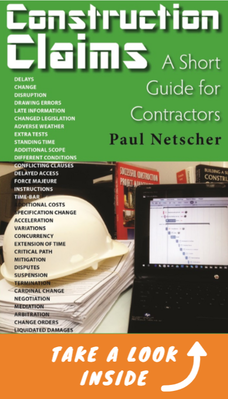
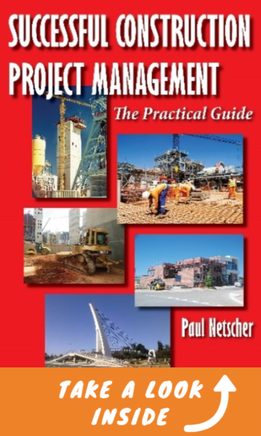
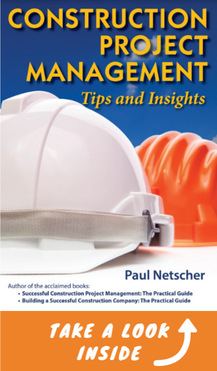
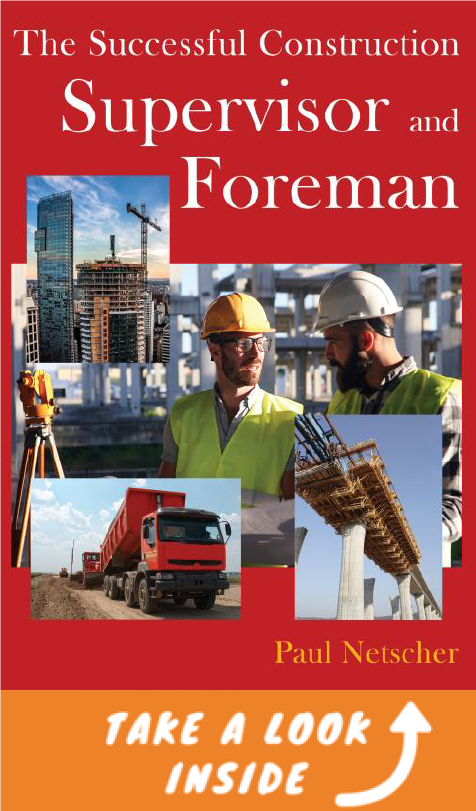
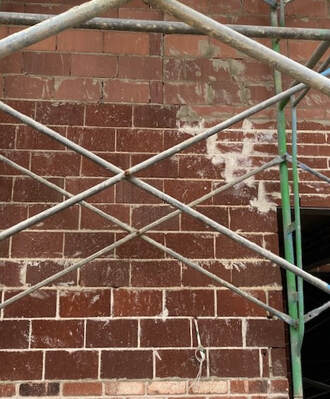

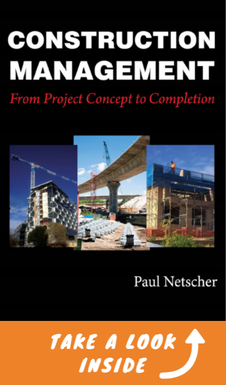
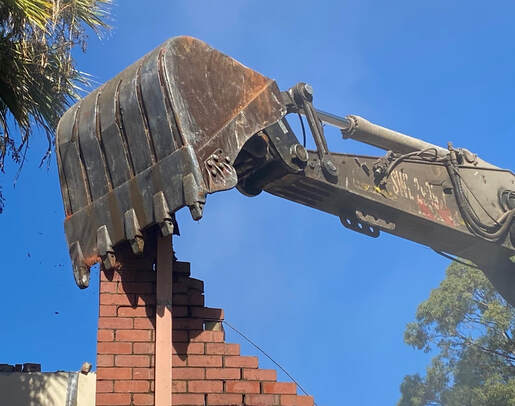

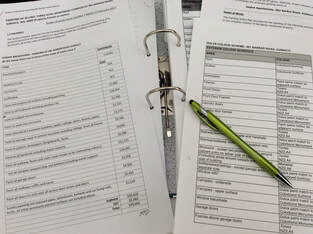
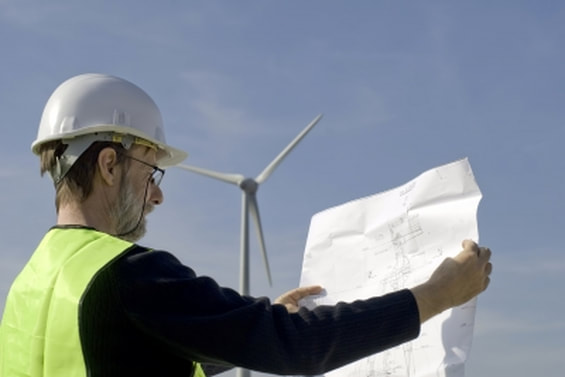
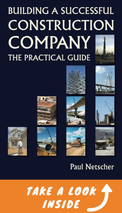
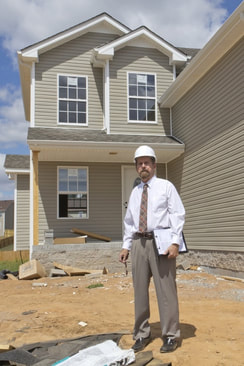







 RSS Feed
RSS Feed




